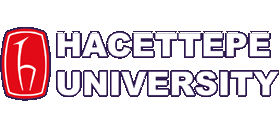| Obligation |
: |
Must |
| Prerequisite courses |
: |
- |
| Concurrent courses |
: |
- |
| Delivery modes |
: |
Face-to-Face |
| Learning and teaching strategies |
: |
Lecture |
| Course objective |
: |
The purpose of this course is to give students the basic chemical principles, to bring theoretical and practical knowledge evaluation skill and so preparation of student to future vocational training courses. |
| Learning outcomes |
: |
1. Makes comments and applications on atomic structure, theories about atoms and the periodic table. 2. Performs calculations using stoichiometry for all kinds of chemical reactions. 3. Learns about the various theories of liquid solutions and gases and uses problem solving. 4. Knows the details of concepts such as heat, work, enthalpy and internal energy concepts and makes applications. 5. Using various theories on the bond concept estimates and commentates geometry, bond angle, bond length and bond energy of chemical compounds. 6. Knows the relationship between intermolecular forces and liquids, solids and gases and applies to the appropriate fields. 7. Knows how chemical reactions are used in electricity production and how electricity is caused by chemical reactions. 8. Establishes the connection between chemistry and electricity. |
| Course content |
: |
Matter: its properties and measurements, Atoms and the atomic theory, Chemical compounds, Chemical reactions, Introduction to reactions in aqueous solutions, Gases, Thermochemistry, Electrons in atoms, The periodic table and some atomic properties, Chemical Bonding, Intermolecular forces: Liquids and solids, Electrochemistry. |
| References |
: |
General Chemistry, Principles and Modern Applications, Petrucci, Harwood, Herring Co. New York. |
Matrix Of The Course Learning Outcomes Versus Program Outcomes
| Key learning outcomes |
Contribution level |
| 1 |
2 |
3 |
4 |
5 |
| 1. |
Possesses the theoretical and practical knowledge required in Electrical and Electronics Engineering discipline. | | | | | |
| 2. |
Utilizes his/her theoretical and practical knowledge in the fields of mathematics, science and electrical and electronics engineering towards finding engineering solutions. | | | | | |
| 3. |
Determines and defines a problem in electrical and electronics engineering, then models and solves it by applying the appropriate analytical or numerical methods. | | | | | |
| 4. |
Designs a system under realistic constraints using modern methods and tools. | | | | | |
| 5. |
Designs and performs an experiment, analyzes and interprets the results. | | | | | |
| 6. |
Possesses the necessary qualifications to carry out interdisciplinary work either individually or as a team member. | | | | | |
| 7. |
Accesses information, performs literature search, uses databases and other knowledge sources, follows developments in science and technology. | | | | | |
| 8. |
Performs project planning and time management, plans his/her career development. | | | | | |
| 9. |
Possesses an advanced level of expertise in computer hardware and software, is proficient in using information and communication technologies. | | | | | |
| 10. |
Is competent in oral or written communication; has advanced command of English. | | | | | |
| 11. |
Has an awareness of his/her professional, ethical and social responsibilities. | | | | | |
| 12. |
Has an awareness of the universal impacts and social consequences of engineering solutions and applications; is well-informed about modern-day problems. | | | | | |
| 13. |
Is innovative and inquisitive; has a high level of professional self-esteem. | | | | | |
